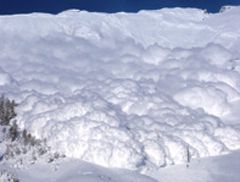New model for avalanche release
A recently developed model describes the principal factors contributing to the release of a slab avalanche.

For a long time snow researchers have been seeking to describe this type of avalanche formation with physical models in order to improve avalanche forecasting. The initial models described the failure as a shear fracture while disregarding key properties of the weak layer itself. A more recent model - the so-called anticrack model, focused on the collapse of the weak layer, which improved the understanding of remotely triggered avalanches in flat terrain. However, this new model suggests that slope angle has very little influence on the critical crack length – a puzzling outcome in view of contrary observations indicating that the steeper the slope, the more likely avalanches are to occur...

